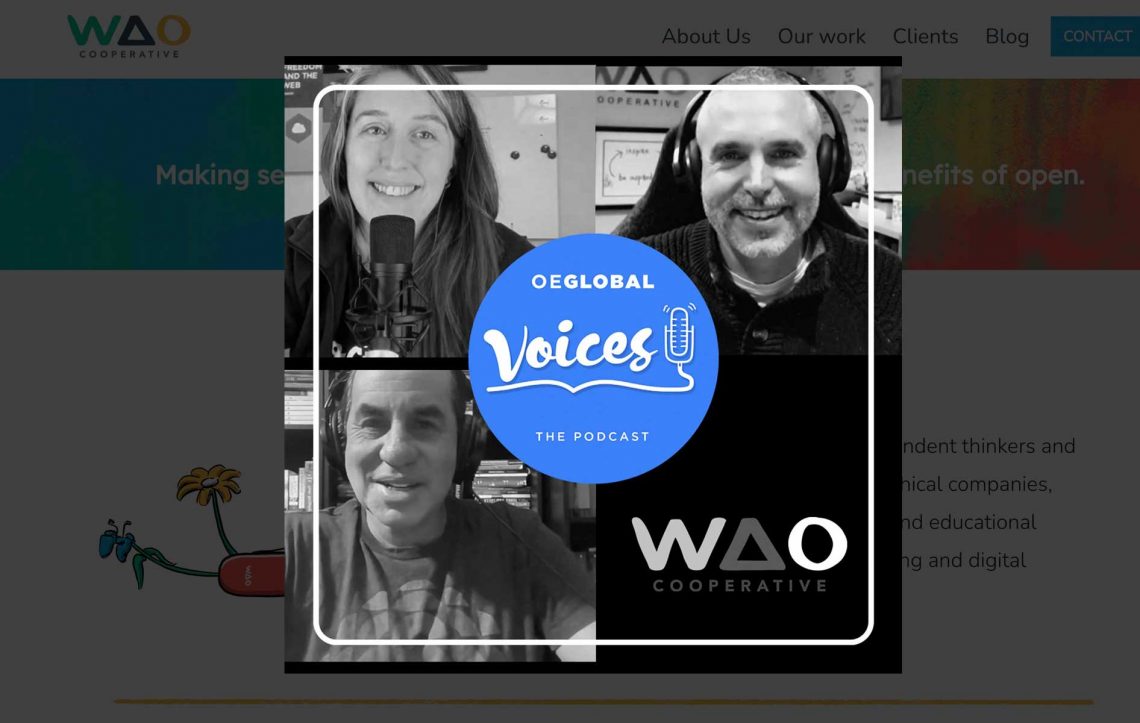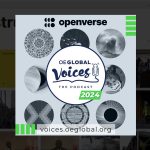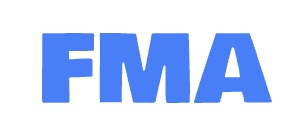For a perspective on openness in action a bit outside of the higher education circles, in this episode we talk with representatives of an organization that not only works in the open, but lives it as We Are Open. I’ve known and collaborated for many years with both Laura Hilliger and Doug Belshaw who have roots working in education, but now are core members of the We Are Open Cooperative, that lives and works the principles of openness with a wide range of organizations.
In our conversation we hear from Laura and Doug about working openly as a social cooperative organization, how they help organizations adopt open practices, developing and supporting communities of practices, open badges (and the Keep Badges Weird community), social media, the fediverse, system change, and more.
For more visit We Are Open and make note especially of their open resources at Learn With WAO.

Podcast: Play in new window | Download
References and Quotes for Episode 46
It’ll be seven years in May and we just get to do some cool stuff. What are some of the people that we worked with before? Well, we’ve worked with people like Greenpeace, with tech companies, with nonprofits, and all different kinds of people doing community work, doing courses, helping them work more openly, like Sport England at the moment. They’ve got lots of different bodies that look after Basketball England and Hockey England and they don’t work together, really. We’re helping them work together and share data and share ideas and approaches and just take those first steps that lots of people listening to this will just take for granted, but actually are really needed to open up organizations.
Doug Belshaw on the We Are Open co-op
I was just reflecting on the different avenues that clients come in from. I think one of the things that we do quite actively is we promote open working. We do get clients come in that want to be a little bit closed down and we take it upon ourselves to push our clients towards being more open. We very, very rarely take on projects where we can’t be completely open. We do have some, but most of them we go into it saying, okay, but we’re going to want to write about this on the internet, we’re going to want to talk about it. We want to be open by default and this is really important for us because we’ve been involved in openness so long, it’s actually hard to not be open about things.
Laura Hilliger on being open by default
- We Are Open (WAO) Cooperative
- TAO of WAO (podcast)
- Laura Hilliger (web site)
- 2020 Women in IT Digital Leader of the Year
- Writing on openness (medium.com)
- @epilepticrabbit@mastodon.social (Mastodon)
- Doug Belshaw
- Open Thinkering (blog)
- Thought Shrapnel (ideas)
- @dajb@social.coop (Mastodon)
I think a lot of people think that if you just build the space for people to show up to, then people will show up, but that’s not actually how it works. There is architecture behind a successful community of practice and there are people who promote the principles and values of that community and work to network people together and try to have it be a fun, welcoming space or well, welcoming, at least, maybe not always fun, depending on how serious a particular community is. Activist communities might not necessarily be what I would call as fun, but they’re organizing around a particular set of ideals and that is architected.
Laura Hilliger on community building
But if it is too strong-arm architected, if the moderation of the community or the organization who’s running the community, funding the community tries to put in too much structure or doesn’t pay attention to what people in the community are actually doing, then that can stifle it as well. For me, community building is definitely a balancing act between providing structure for people so that they have a place that they can engage and letting go of structure so that that engagement, regardless of what it is, is something that furthers the community.
- 5 Practical Tips for Working Openly
- Buzzing Communities: How to Build Bigger, Better, and More Active Online Communities (2012, Richard Millington)
- Howard Rheingold
…especially if you work in academia, you might have been exposed to badges in the early days and anytime you are exposed to something quite early in the maturity of something, you think you know it and then it evolves and changes and then you see it again and you have to revisit your previous opinion. One of the things that we’ve learned over the last 10 years of Badges is that the motivation for why it is that you want to earn a badge is important. As Laura said there, there’s badges that you are working towards because you can see them. There’s stealth badges that you don’t know that you can earn that are just given to you in a secret way. We’ve also learned that if you go to an event and you’re literally issued the patch, the sew-on patch of a badge that you’ve earned, that’s a really powerful thing.
Doug Belshaw on approaches to badging
- Keep Badges Weird (community space)
- Fediverse Pioneer Badge (OEG Connect)
Because one of the things about social media for years and years and years has been behavioral economics. Twitter, Facebook, Instagram, those tools are designed to have people act a certain way and to have them value certain kinds of things like attention. The Fediverse doesn’t work like that. Mastodon as a short-form blogging platform doesn’t care about attention and doesn’t reward you for having more attention. I wonder, what does it really mean for society? Does it mean that people that are going to stop caring what a rando on the internet thinks? I don’t think that that’s a change that’s going to come very quickly because I think that the behavioral economics of social media platforms were based on capitalism anyway. But it is a ripe rabbit hole for philosophical discussion on how we as human beings behave, for sure.
Laura Hilliger on the Fediverse
I think there’s lots of people making grand pronouncements about what it means for society and this and that and whatever. I don’t particularly want Mastodon to go mainstream, and that’s for two reasons. Firstly, because it would mean I have to go get out of there quickly. I remember seeing a bumper sticker years ago saying, if you’re not on the edge, you’re taking up too much room or something like that. That stuck with me in terms of my career and innovation and stuff. Chase the weird stuff. But secondly, Mastodon, as people are probably sick of me saying, Mastodon is not the Fediverse. It’s like saying, oh, are you on Gmail when actually you mean email? It’s one part of it. I’m experimenting with Pixel Fed, which is a bit like Instagram.
Doug Belshaw on the Fediverse
- Mastodon (federated messaging)
- Pixelfed (federated image sharing)
- Exercise.cafe (Doug’s Pixelfed instance)
- Misskey (federated microblogging)
I was just going to try to loop back to your question that kicked off this bit of conversation and thinking about what people can do inside of higher education institutions or other organizations. I think what Doug just said there about questioning constraints. I think one of the things that we don’t tend to question is some of the social norms that we’re brought up to understand. The idea of having a boss, which is something that at the co-op, we make fun of this idea of having a boss. Somebody is going to boss you, a full-grown adult, around and tell you what to do. We know that that’s not what good leadership looks like or a good manager.
Laura Hilliger on organizational leadership and social norms
You’ve heard the phrase that people don’t quit jobs, they quit managers. We know what good leadership looks like and good leadership looks like the boss treating their subordinates, which is also a language that we shouldn’t be using, in a way that respects their self-autonomy and their what they can actually bring to the table. People have different skills and competencies, they have different talents. Questioning those social norms around hierarchy inside of higher education institutions is really important because we are not perfect. Our societies aren’t perfect and there’s always room for improvement.
Cramlington Learning Village had this amazing approach to pedagogy and everything like that. I wish I could have sent my kids there. They just basically said, you have to start off doing innovation before things start to decline. Everything has an arc to it, like a tennis ball being served over a net and you have to push onto the next thing before you start your decline.
Doug Belshaw on the shape of change
When you start that next thing, there’s going to be a little bit of awkwardness and pushback. Actually things will get a little bit weird, not as productive for a while, but so you can move onto the next level. It’s like an S-shaped curve. That’s always stuck with me even since I saw it about 15 years ago, because that’s a hard thing to do with clients in any organization, trying to say there’s going to be a little bit of awkwardness and weirdness while we do this innovation work, but then you’re going to open up these massive opportunities to do some amazing, amazing things.
- How to Unf*ck Your Organisation (WAO free email course)
- Feminism is for Everybody, Especially Educators (WAO free email course)
- The Sigmoid Curve (pdf)
- Cramlington Learning Village
- Two Loops Model, Our Theory of Change (Burkana Institute)
Our open licensed music for this episode is a track called Together by Au fond du car licensed under a Attribution-NonCommercial-ShareAlike 3.0 International License found, like most of our intro music, in the Free Music Archive
The introduction created with the OEG Voices Mixer features voices of Ajita D, Doug B, Kevin H, Judith S, Laura H, Rajiv J, Maren D, Alex E, Jöran M-M, Bonni S, and Verena R (learn how to add your voice to the mix).















Start the discussion at OEG Connect